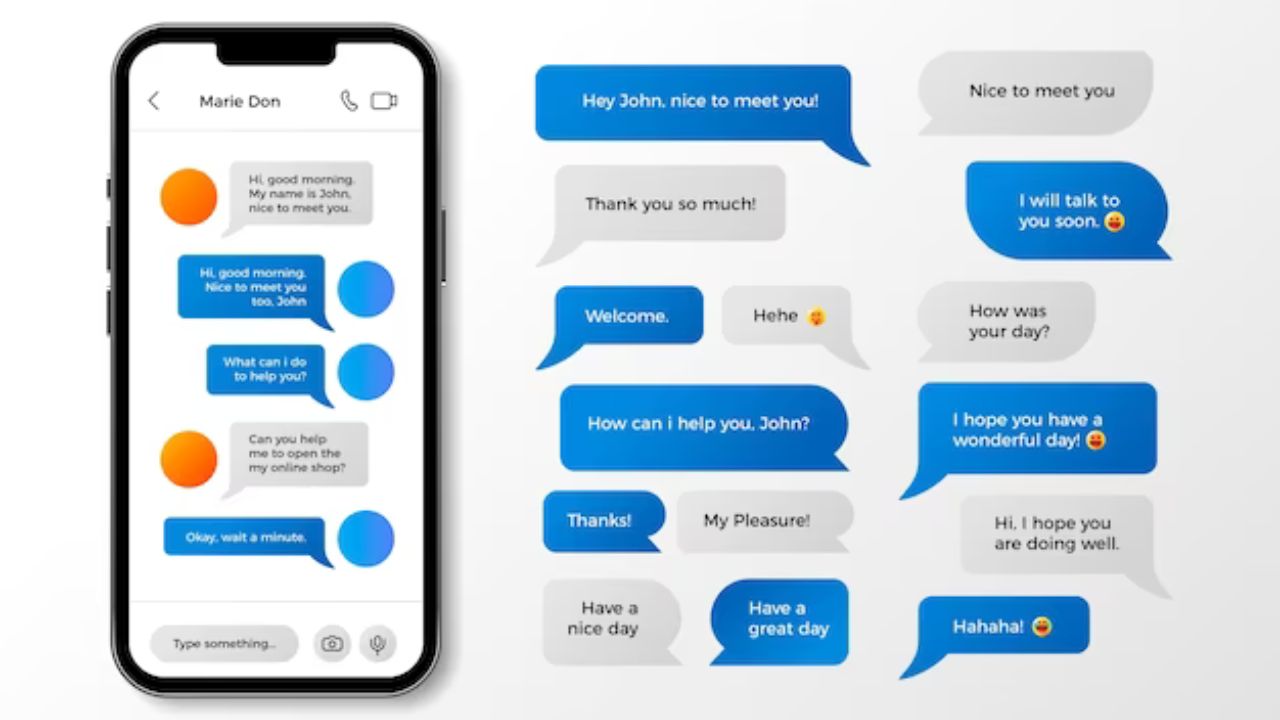BUSINESS
Leveraging Effective Waste Management Strategies for Environmental Sustainability

Table of Contents
- The Evolution of Waste Management Practices
- The Science of Recycling and its Global Footprint
- The Economics of Waste Management
- E-Waste: A Modern Challenge
- The Benefits of Composting for Soil Health
- Hazardous Waste Disposal and Public Safety
- The Role of Government in Regulating Waste Management
- Public Awareness and Participation
- The Future of Waste Management
Key Takeaways
- Efficient waste management systems are pivotal for sustainability and can drive substantial environmental improvements.
- Recycling serves a crucial role globally, cutting back the depletion of irreplaceable resources and reducing greenhouse gas emissions.
- Economic incentives and strategic investments in waste management can translate into significant long-term savings and environmental benefits.
- E-waste poses new challenges but also presents opportunities for innovation in recycling technologies.
- Composting enriches soil and reduces the need for chemical fertilizers, contributing to more sustainable agricultural practices.
- A successful and comprehensive waste management strategy requires a collaborative effort between governments, businesses, and the public.
The Evolution of Waste Management Practices
The historical context of waste management reveals a linear progression from simplistic, often harmful practices to nuanced, environmentally conscious strategies. Municipal and commercial waste was frequently discarded in bygone eras in open dumps or waterways, leading to severe health and environmental risks. Advancements in understanding ecological balance have spurred the transformation towards more sustainable disposal methods. This evolution underscores the significance of eco-friendly commercial waste services in shaping public health and preserving natural ecosystems.
The Science of Recycling and its Global Footprint
The systematic recycling process encompasses numerous steps, from the initial sorting to the final act of repurposing materials. It is a cornerstone in the fabric of sustainable waste management. Globally, recycling mitigates the consumption of raw materials, conserves energy, and reduces greenhouse gas emissions. For instance, recycling aluminum saves up to 95% of the energy required to produce it from raw materials. This conservation is vital in curtailing the progression of climate change.
The Economics of Waste Management
Waste management is not solely an environmental concern but intrinsically linked to economic ramifications. Regions that invest in efficient waste systems reap the benefits of reduced operational costs and increased resource recovery. The fiscal prudence of recycling and waste minimization is evident, as these activities circumvent the economic burden of landfills and waste incineration. Long-term economic projections underscore the viability of investing in innovative waste management strategies, which protect the environment and foster economic growth and job creation.
E-Waste: A Modern Challenge
In our technology-driven world, electronic waste, or e-waste, has surfaced as a prevalent challenge, growing at an alarming rate of global concern. Disposing outdated electronics is a complex undertaking, mainly due to the hazardous materials and valuable resources they harbor. Proper handling, through recycling and refurbishment, can prevent environmental contamination and recover precious metals like gold and silver. Rigorous analysis highlights the intricate dynamics of e-waste and the critical need for robust regulation and progressive recycling technologies.
The Benefits of Composting for Soil Health
Composting, the biological decomposition of organic matter, has emerged as a critical component of sustainable waste management. By diverting food waste and other organic materials from landfills to composting facilities, we reduce methane emissions and create a natural, potent fertilizer for agricultural and landscaping applications. Incorporating compost into soil enhances its quality, supporting robust plant growth and contributing to the health of entire ecosystems. Personal and community composting initiatives symbolize a proactive step towards a sustainable, waste-conscious future.
Hazardous Waste Disposal and Public Safety
Proper disposal of hazardous waste is not just an environmental concern but a matter of public health. Safe management is required to prevent accidents and long-term harm, including industrial byproducts, medical waste, or household chemicals. Specialized waste treatment facilities and strict regulatory measures ensure that these dangerous substances are handled to safeguard the well-being of current and future generations. For society’s safety, embracing policies and practices that mandate and facilitate proper hazardous waste disposal is non-negotiable.
The Role of Government in Regulating Waste Management
Governmental bodies play a pivotal role in orchestrating effective waste management systems. Governments can ensure that waste services adhere to the highest environmental protection standards through statutory regulations and oversight. Legal mandates can incentivize waste generation reduction, encourage the adoption of recycling programs, and establish guidelines for proper disposal methods. Governmental interventions can compel industry compliance and entice innovation within the sector, paving the way for cutting-edge solutions to waste management challenges.
Public Awareness and Participation
Despite advancements in technology and policy, the ultimate success of waste management initiatives is deeply rooted in public behavior. Awareness campaigns can enlighten individuals about the environmental impacts of their consumption habits and the benefits of proper waste disposal. Public participation can significantly amplify the effectiveness of waste management strategies. When informed citizens actively engage in waste reduction, reuse, and recycling efforts, they contribute immensely to the collective goal of environmental preservation and sustainable living.
The Future of Waste Management
Looking ahead, the trajectory of waste management is geared towards innovation and sustainability. Technological advances, such as artificial intelligence and machine learning, are revolutionizing the sorting and processing of recyclables. Innovations in biodegradable materials and waste-to-energy technologies will likely diminish our reliance on traditional disposables and landfills. The consistent pursuit of sustainable waste practices is instrumental in fostering a resilient ecological future. By remaining conscientious and forward-thinking in our approach to waste management, we are crafting a legacy of environmental stewardship for subsequent generations.
BUSINESS
Elevate Your Strategy with the Flanking Strike Macro SOD

Are you looking to elevate your strategic game and outmaneuver the competition? Look no further than the Flanking Strike Macro SOD! This tactical approach has been a game-changer in military history and modern business, offering a powerful way to gain an advantage. Join us as we delve into how this strategy can revolutionize your approach and take your organization to new heights.
Understanding the Basics of Strategy and Tactics
When it comes to achieving success in any endeavor, understanding the basics of strategy and tactics is crucial. Strategy involves setting long-term goals and determining the best way to achieve them. It’s about planning ahead and positioning yourself for success.
Tactics, on the other hand, are the specific actions you take to implement your strategy effectively. They involve making decisions in the moment that will help you progress towards your overall goal. Understanding how strategy and tactics work together is key to navigating challenges and seizing opportunities as they arise.
In essence, strategy sets the direction while tactics pave the way forward. By mastering both elements, you can create a comprehensive approach that maximizes your chances of success. So whether you’re leading a military campaign or running a business, grasping these fundamentals will set you on the path to victory.
The Power of Flanking Strike in Military History and Modern Business
Flanking strikes have been a game-changer throughout history, from ancient battles to modern-day business competitions. In military tactics, the flanking maneuver involves attacking the enemy from the side or rear, exploiting weaknesses and creating chaos in their ranks. This strategy can turn the tide of a battle by outmaneuvering and outsmarting opponents.
Similarly, in business, implementing a flanking strike approach means finding innovative ways to gain an advantage over competitors. By identifying untapped markets or introducing disruptive products/services, companies can carve out their niche and secure a competitive edge.
Successful businesses like Apple and Airbnb have utilized flanking strategies to disrupt traditional industries and dominate market segments. By thinking outside the box and taking calculated risks, these companies have redefined standards and set new benchmarks for success.
In both military history and modern business practices, the power of the flanking strike lies in its ability to surprise adversaries, exploit vulnerabilities, and achieve breakthrough results.
Implementing the Flanking Strike Macro SOD in Your Strategy
Ready to take your strategy game to the next level? Implementing the Flanking Strike Macro SOD can be a game-changer for your business. This tactical approach involves attacking the competition from an unexpected angle, catching them off guard and gaining a strategic advantage.
To implement this strategy effectively, you need to analyze your competitors’ weaknesses and identify areas where you can outmaneuver them. By leveraging this tactic, you can disrupt their plans and create new opportunities for your own success.
Remember, timing is crucial when executing a flanking strike. You must strike swiftly and decisively to maximize its impact. In today’s fast-paced business environment, being proactive and agile is key to staying ahead of the curve.
Don’t be afraid to think outside the box and embrace innovation in your approach. By incorporating the Flanking Strike Macro SOD into your strategy, you can elevate your tactics and achieve greater success in reaching your goals.
Case Studies: Successful Companies and Organizations That Utilized Flanking Strike
Picture this – a well-known tech giant used the Flanking Strike approach to disrupt the market with innovative products that caught their competitors off guard. By strategically positioning themselves where their rivals least expected, they were able to carve out a niche for themselves and dominate the industry.
In another case, a startup in the retail sector employed the same tactic by targeting underserved customer segments that larger players had overlooked. This allowed them to gain traction quickly and establish themselves as a formidable player in the market.
Furthermore, an NGO utilized the Flanking Strike strategy to address pressing social issues from unconventional angles, making significant strides in creating positive change within communities.
These real-life examples demonstrate how thinking outside the box and seizing opportunities can lead to remarkable success in various industries.
Limitations and Risks of Using the Flanking Strike Macro SOD
Every strategy, no matter how effective, comes with its own set of limitations and risks. The Flanking Strike Macro SOD is a powerful tactic but must be implemented with caution. One key risk is the potential for overextension – pushing too far into enemy territory can leave your flanks vulnerable to counterattacks.
Another limitation is the need for precise coordination among different units or departments within an organization. Without proper communication and alignment, the flanking strike can easily become disjointed and ineffective. Additionally, relying too heavily on this tactic may make your approach predictable to competitors who can then anticipate your moves.
Furthermore, there’s a risk of diversion of resources towards executing the flanking strike at the expense of other crucial aspects of your overall strategy. It’s essential to balance the use of this tactic with maintaining a holistic approach to achieving your objectives effectively.
Conclusion: Why Incorporating Flanking Strike Can Take Your Strategy to the Next
By incorporating the Flanking Strike Macro SOD into your strategy, you can take your approach to the next level. This powerful tactic has been proven effective in military history and modern business, allowing organizations to outmaneuver competitors and seize opportunities that may have otherwise been missed.
Understanding the basics of strategy and tactics is crucial for any successful implementation. The Flanking Strike offers a unique way to gain an advantage by attacking from unexpected angles, disrupting the status quo, and achieving breakthrough results.
Looking at case studies of successful companies and organizations that have utilized the Flanking Strike shows us how this strategy can lead to significant growth, increased market share, and sustainable competitive advantages.
While there are limitations and risks associated with using the Flanking Strike Macro SOD, when executed correctly with careful planning and analysis, it can be a game-changer for your organization.
Incorporating the Flanking Strike into your strategic arsenal requires creativity, adaptability, and a willingness to think outside the box. By mastering this tactic and leveraging it effectively in your decision-making processes, you can position your company for success in today’s dynamic business landscape.
BUSINESS
Maintaining Peak Performance in Your Refrigerator: The Role of Ice Makers

Key Takeaways:
- Delving into the intricate workings of fridge ice makers.
- Providing comprehensive maintenance tips for consistent ice production and quality.
- Detecting potential issues that could lead to ice maker repair or replacement.
- Choosing an eco-friendly ice maker aligned with modern environmental standards.
- Benefiting from available informative resources on refrigerator maintenance and repair.
Introduction to Fridge Ice Makers
The refrigerator is essential in any contemporary kitchen, providing convenience and efficiency to culinary enthusiasts. The integrated ice maker is an exceptional feature that stands out for its ability to dispense chilled beverages instantly. This splendid facility eliminates the need for manual labor and the hassle of filling and emptying ice trays, making it an attractive addition to any home. To fully take advantage of the benefits of this marvelous feature and prolong its lifespan, users must gain a comprehensive understanding of its mechanics and maintain it with diligence. Users can have a constant supply of ice with this remarkable appliance.
How Do Ice Makers Work?
The process of how a refrigerator’s built-in ice maker, like the one found on PartSelect.com, works is genuinely fascinating. Even though it may seem like it operates quietly in the background, the process it goes through to produce ice is dynamic and precise. First, an electrically-controlled valve opens, allowing household water to flow into the ice mold. Then, a built-in thermostat determines when the ice is suitably frozen. At this point, heating coils briefly warm the molds to loosen the ice, ensuring that the cubes can be easily dispensed. Finally, a motor thrusts the ice cubes into a collection bin, where they are ready to be used at any time. This process is automatic and repeats cyclically, ensuring a continuous supply of ice for your convenience. It is important to note that the quality of the components used in the process is crucial in determining the reliability of the ice maker.
Regular Maintenance for Ice Makers
Regular maintenance is crucial to ensure an ice maker’s optimal performance and extended lifespan. Taking simple, proactive measures that can have a profound impact is essential. Homeowners should clean the ice bin with warm water and mild detergent periodically to remove old ice residues and eliminate germs that may affect ice quality or cause health risks. If the ice maker has a water filter, it’s advisable to replace it at the intervals recommended by the refrigerator manufacturer. Doing so will help ensure fresher-tasting ice and prevent potential clogging of water lines. Regular inspections of the water inlet valve and line can help identify leakage issues that can lead to water damage and affect ice quality. Homeowners can take preventive measures to reduce breakdowns and ensure clear ice cubes.
When It’s Time for a Repair or Replacement
Ice makers are incredible appliances designed to provide an endless supply of ice, but even with diligent maintenance, they are not immune to wear and decay. Suppose you notice a decline in ice production, water leakage, or strange sounds during operation. These signs indicate that the ice maker might require professional servicing or a complete replacement. Discolored ice cubes could suggest the presence of mineral deposits in the water line or rust inside the system, and these issues require immediate attention to prevent further damage. By recognizing these signs early, appliance owners can take swift action, potentially warding off costlier repairs or full-system failures. It is essential to stay alert and care for your ice maker to ensure it operates efficiently and effectively.
Ease of Troubleshooting Common Ice Maker Issues
A proactive approach often resolves many ice maker issues without expert intervention. Some common problems, such as stalling of ice production, can be tackled with straightforward measures like checking for a blockage in the fill tube or ensuring strong water flow for the ice maker’s operation. Detectable frost or icy buildup usually signals a damaged seal or gasket, which can permit outside air to infiltrate and cause unwanted frost—a simple gasket replacement could be the quick fix. Unpleasant tasting or smelly ice often necessitates cleaning the ice bin or changing the water filter to rid the system of the cause of odor or contamination. Such basic troubleshooting techniques can usually save homeowners both time and expenses.
Selecting a Replacement Ice Maker
If your refrigerator’s ice maker reaches the end of its functional lifespan or suffers irreparable damage, selecting the correct replacement is critical. The market offers a diverse range of ice maker models that can be fitted to various refrigerators. Opting for a compatible unit ensures smooth operation and decreases the likelihood of future malfunctions. In such scenarios, the appliance’s model number is your trusty reference, guiding you to the precise part that will complement your refrigerator seamlessly.
Environmental Impact of Ice Makers
As people become increasingly aware of environmental concerns, they are paying more attention to household appliances’ impact on the planet. Refrigerators, in particular, are being scrutinized for their high energy consumption and ecological footprint. This has led to a growing concern about ice makers, which are essential to refrigerators and contribute significantly to their energy usage. As a result, consumers are seeking more eco-friendly options for their refrigeration needs. It’s worth noting that modern ice makers are increasingly designed to be more energy-efficient and are often incorporated into energy-saving refrigeration solutions. By referring to resources such as the Energy Star Criteria for Refrigerators, environmentally conscious individuals can make informed and sustainable choices when selecting eco-friendly appliances.
BUSINESS
Data Detectives: How Your Participation in Clinical Trials Advances Medical Science
Key Takeaways:
- Understanding the integral role of clinical trials in medical progress.
- Recognizing the benefits and risks of clinical trials to participants.
- The ethical considerations and the importance of informed consent.
- How data from trials can shape the future of healthcare.
Table of Contents:
- The Foundations of Clinical Trials
- Volunteer Engagement: The Heart of Discovery
- Demystifying the Clinical Trial Process
- The Significance of Informed Consent
- Efficiency and Ethics: The Dual Priorities
- Behind the Scenes: Data Analysis in Trials
- Impact on Future Medicine
- How to Become a Clinical Trial Volunteer
The Foundations of Clinical Research
Clinical research is the critical cornerstone of medical advancements, reflecting the symbiosis between scientific rigor and human volunteerism. These protocols are essential for ascertaining emerging medical interventions’ safety and efficacy and ensuring continued treatment options development. The grounding principle of any clinical trial is the structured framework that guides its processes. This framework is methodically designed and subject to intense scrutiny by regulatory bodies, ensuring that new therapies are effective and safe for the populace. The structured nature of clinical research allows professionals to take logical and measured steps toward breakthroughs in medical science.
Volunteer Engagement: The Heart of Discovery
At the fulcrum of all clinical research efforts are the trial participants themselves. These individuals, often called volunteers, play an invaluable role in discovering new treatments. By agreeing to partake in trials, they provide a service that transcends personal benefit. They contribute to a broader societal good, encompassing enhanced knowledge about disease processes, potential treatments, and therapeutic interventions. Acknowledging the benefits and risks of clinical trials is pivotal to participant involvement. Volunteers are thoroughly briefed on possible side effects, anticipated outcomes, and the crucial nature of their contribution, thus enabling them to make informed decisions and be active, informed contributors to the trial process.
Demystifying the Clinical Trial Process
Many people may find the clinical trial process opaque and complex, fraught with scientific jargon and intricate procedures. Breaking down these barriers to understanding is crucial for enhancing public engagement and transparency. It is typically segmented into a series of phases, each meticulously design to serve a particular purpose. Phase I trials act as a safety check for a new intervention on a limited number of participants, while Phase II studies involve a larger group to evaluate its effectiveness. After completing these stages, Phase III trials are conducted on a larger scale, comparing the intervention with existing treatments to establish superiority or equivalence.
The Significance of Informed Consent
Informed consent is a crucial pillar of clinical research, acting as a gateway for participant autonomy and safety. This process involves educating potential participants about the clinical trial understandably and comprehensively. The informed consent form details every aspect of the trial, such as the nature and purpose of the research, anticipated risks and benefits, alternative procedures or treatments, and the participant’s rights, including the right to withdraw from the trial at any time. This transparency protects the volunteer and fosters an environment of trust and ethical practice within the trial. Allowing participants to enter the study with a complete understanding of their involvement is a moral obligation and cornerstone of compassionate research practices.
Efficiency and Ethics: The Dual Priorities
Clinical research operates on two inextricably linked priorities: efficiency in data collection and unwavering commitment to ethics. Researchers seek to obtain robust and high-quality data that can withstand scrutiny and form the basis for medical guidelines and treatment protocols. Simultaneously, the ethical considerations in clinical trials encompass participant privacy, informed consent, risk minimization, and the equitable selection of research subjects. These measures ensure that pursuing scientific knowledge does not compromise human dignity and respect for individual rights.
Behind the Scenes: Data Analysis in Trials
The success of clinical research is inherently tied to the meticulous analysis of the data it generates. Teams of statisticians and data scientists work in the background, sifting through vast amounts of information to identify trends, outcomes, and potential issues. The data analysis phase is meticulous and delicate, as it holds the key to validating the effectiveness of new medical interventions. During this phase, the results are interpreted to derive conclusions that could impact the availability of new treatments to patients worldwide.
Impact on Future Medicine
Clinical research is significant because it opens the possibility of new treatments and lays the groundwork for future innovations. Successful clinical trials have far-reaching implications; they inform clinical guidelines, contribute to scientific literature, and can significantly alter the course of patient care. In this sense, the data obtained from clinical trials is a valuable asset that can influence healthcare policy, funding allocations, and the standard of care delivered to patients globally for generations to come.
How to Become a Clinical Trial Volunteer
For those considering altruistic involvement in clinical trials, the path begins with understanding the eligibility criteria for participation and the depth of the commitment needed. Prospective volunteers should gather information on available trials that match their interests or conditions. The next step usually involves a pre-screening or an initial discussion with the trial coordinators, who provide detailed information on the trial’s scope and expectations. Making an informed decision to volunteer is not just a personal choice but a potential contribution to the collective medical advances.
For more information on the ethical and procedural nuances of clinical trials, interested individuals can consult global health authorities that offer resources and fact sheets for public education.
It’s critical to keep up with the most recent advancements in clinical research. News outlets often provide insightful coverage of current clinical trials and the strides in medical science, which can serve as a rich resource for learning about ongoing advancements.
-

 LOVE MESSAGES5 months ago
LOVE MESSAGES5 months agoSweet Love Messages for Her to Make Her Smile
-

 LOVE MESSAGES5 months ago
LOVE MESSAGES5 months ago100 Romantic Good Evening Messages For Her & Him
-

 LOVE MESSAGES5 months ago
LOVE MESSAGES5 months agoRomantic Love Messages For My Husband With Images
-

 LOVE MESSAGES5 months ago
LOVE MESSAGES5 months ago50 Just Checking on You Text Messages for Him & Her
-

 LOVE MESSAGES5 months ago
LOVE MESSAGES5 months agoSweet Love Messages For My Wife With Images
-

 LOVE MESSAGES5 months ago
LOVE MESSAGES5 months agoLong Good Morning Messages to Make Her Fall in Love
-

 LOVE MESSAGES5 months ago
LOVE MESSAGES5 months ago50 Cute Good Night Sweet Dreams Messages For Lovers
-

 LOVE QUOTES3 months ago
LOVE QUOTES3 months agoplease forgive me quotes her him images







